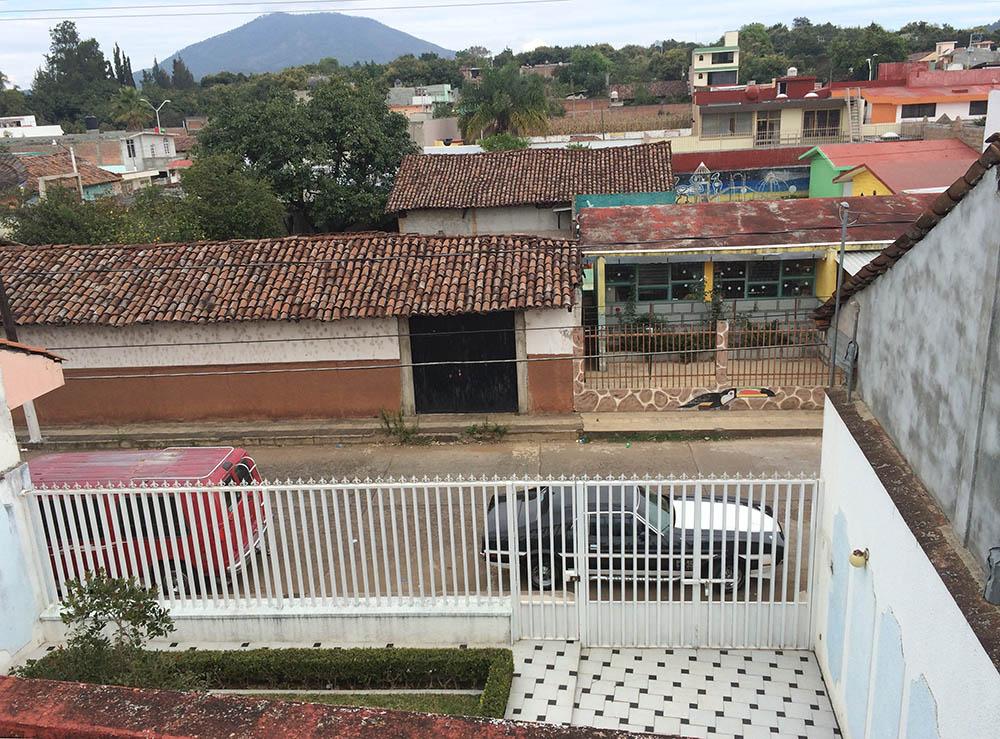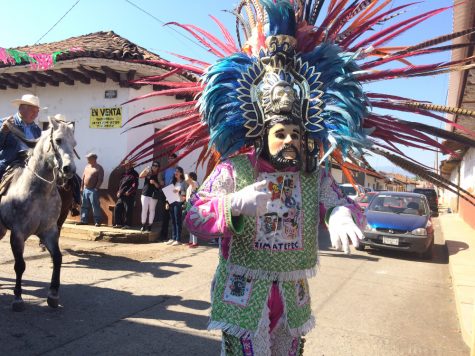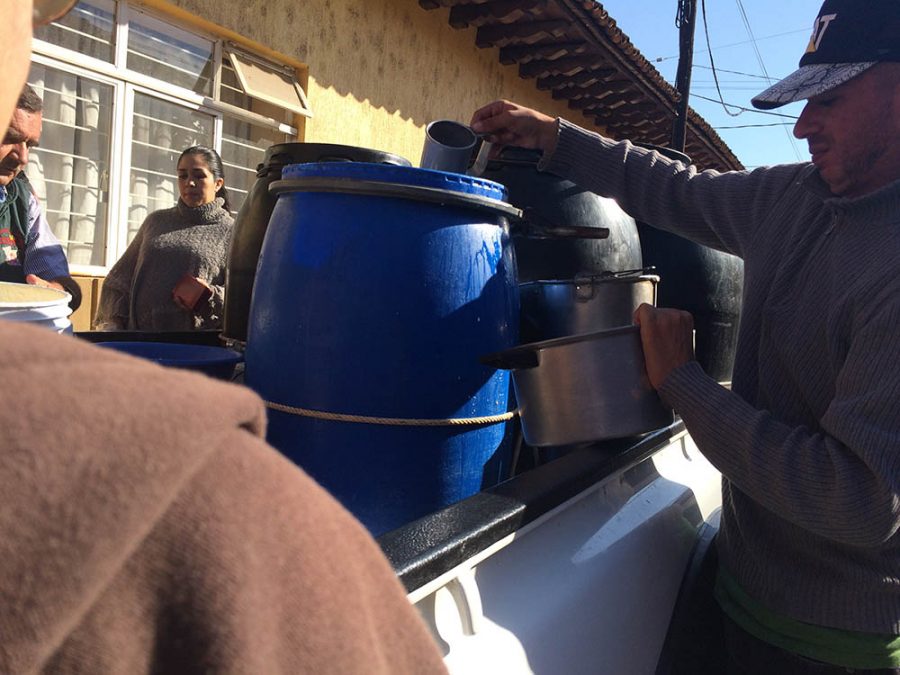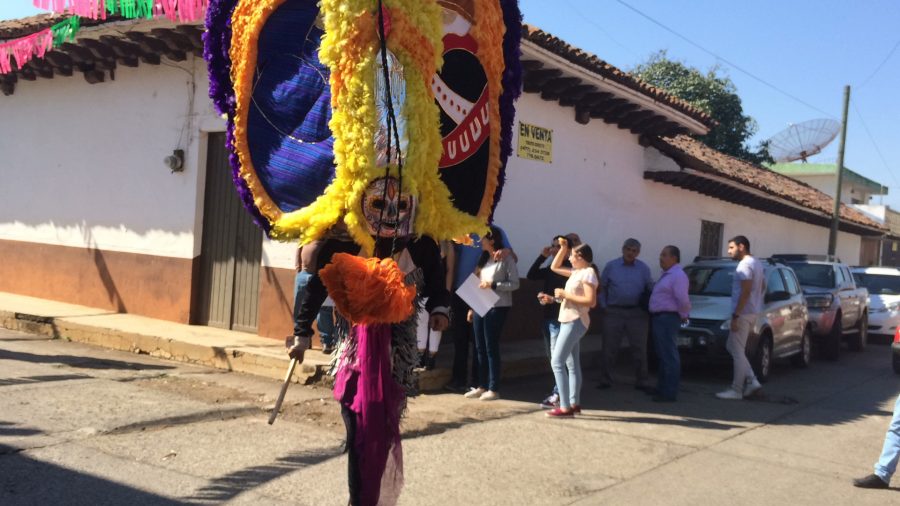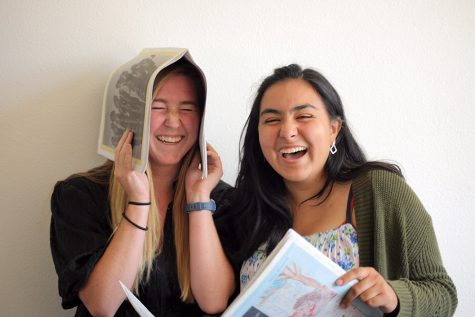Mexico
A look at life in the small Mexican pueblo of Tocumbo.
March 17, 2017
In the mornings, vendors walk the street. “El pan!” they call travelling on foot. The sound of Enrique Iglesias’s “Cuando Me Enamoro,” sig¬nals the passing of another truck selling drinking water. In Tocumbo, Michoacán, México, where my family lives, people buy bread, cheese, cream and water in the streets instead of making a trip to Sprouts or Vons. Everything else is located in small independently owned stores in the plaza. It’s a mere five-minute walk from most homes because of the town’s small size of around 1,799 people, as counted by a 2010 sur-vey, which is not much different than the size of SDA’s student body.
The beige and off-white colors of the houses in Encinitas are ex¬changed for the vibrancy of the blues, pinks and purples of the brick and adobe houses in Tocumbo. The homes have personal¬ity since many were built by their very owners without restric¬tions on outside appearance by town regulations. The houses line the skinny streets of the pueblo, which hold only enough room for one parked car and one passing by. Luckily, cars aren’t frequently in use in Tocumbo, rather motorcycles and four-wheel vehicles pass through the streets. It’s surprising to see how many they can carry, holding entire families of up to five and sometimes a baby as well. Younger children also pass by, 12-year-olds in control of their own motorcycle, speeding through the breaks between the topes (speed bumps). These topes take the place of traffic lights and stop signs in Tocumbo. Because of their size, they force cars to a complete stop.
Unlike Encinitas, Tocumbo is surrounded by forest and large exten¬sions of huertas, land with sugar cane, avocados, and blackberries, which adds to the tranquil atmosphere. The sun rises at 7 a.m. re¬vealing working men and women heading to their small stores in the plaza and those already busy in their huertas. The distant sound of gunshots from hunting in the forest can sometimes be heard.
Trucks carrying thin green cylinders pass through the streets throughout the day, selling the gas needed to fuel the stove for cooking and the boiler for hot showers.
In Tocumbo, water flows through the pipes of the houses every other day of the week from early in the morning until 4 p.m. People have to make sure their tanks are filled with enough water to sup¬ply bathrooms and kitchens during the points throughout the week when water does not flow. When water is weak, people use la bomba, an electric pump, to push water to the higher floors of the houses.
Getting Around
Everywhere is within walking distance. The walk from one side of the small pueblo to the other takes no more than 20 minutes. Passersby call out, “Adios,” smiling. “Buenos tardes,” they say other times, carrying their colorful plastic bags of fruit from the plaza. It doesn’t matter if they don’t know me; I am greeted all the same as people pass by on foot on a mandado (errand) or enjoy a ride on a moto (motorcycle) or a bici (bicycle).
With my grandma, it’s another story. When I’m with her, I am known as nieta de Jose or hija de Ceci, as I listen to long conversa¬tions of old friends and occasionally respond to questions di¬rected my way. A greeting often takes up to half an hour as man¬datory questions are asked about life, the well-being of various family members and the update on the pueblo. It isn’t long until we are caught up to speed on which families are facing what dra¬ma, who has fallen ill and who has divorced since the last visit.
When people need to travel longer distances they take a bus or a combi, a van, instead of depending on cars, which most consider essential in the United States. Depending on the destination, the combis can be tightly packed with some seated on the ground or standing pushed against the door, or nearly empty except for the single rider in the passenger seat chatting animatedly with the driver.
This past winter, much of the conversations involved the gasolinazo (the large gas price spike in January that occurred after long weeks of gas shortages around México), as frustrated bus drivers relayed instances of spending at times up to three hours in line for gas without successly getting ahold of any and as passengers recount¬ed the protests flooding the news. “Oí que iban a cerrar la carretera el domingo,” one would say to the other as they shared rumors of the next time the highways would be unusable because of protestors.
Daily Life in Tocumbo
Tocumbo church bells ring from time to time throughout the day, sig¬naling all kinds of occasions including the usual Sunday and daily masses as well as quinceañeras, renewed marriage vowels and any¬thing else going on in the church no matter how small. La primera al¬ways rings half an hour before the start of the mass, warning those get¬ting ready that they should be heading out soon. La segunda then rings 15 minutes later, queuing those at home to begin trickling into the street for the short walk to the plaza high heels, blazers, well-ironed shirts and all. As time closes in on the start of the mass, voices are heard exclaiming, “Apúrate. Ya van a dar la ultima,” as they speed walk, rush¬ing to make it before the final bell that signals the beginning of mass.
Tuesdays bring the tianguis, a swap meet of indigenous people that travel from town to town selling fruit, clothes and cooking supplies among oth¬er things. The stands cover the plaza in tarps and tables for the morning.
Throughout the week, trucks piled high with sugarcane pass through Tocumbo on their way to the nearby pueblo of Santa Clara. The sugarcane is burned and the wind blows the ash back to the town.
In Tocumbo, everything is natural. Most people buy the milk from cows sold in the street. They themselves scoop out the fat, setting it in a small container they then place on the counter where it remains for a week until it turns into jocoque, a type of cream. The tortilla dough is made by hand, shaped by machine and sold at tortillerías in the pueblo. At the end of each school day, a nevero makes a trip to each school on his motorcycle that has a small cooler attached to the back holding two flavors of ice cream he made himself earlier that day.
La Feria de la Paleta
The small plaza holds four paleterias (ice cream stores), which is no surprise because Tocumbo is famous for its ice cream. At the end of each December, the pueblo holds La Feria de la Paleta, a fair dedi¬cated to ice cream. Posters are hung throughout the streets with the faces of those chosen to run for reina and princesa de la Pal¬eta. During the nights of the fair, the plaza is crowded. This year, bands and dancers took the stage, including Norteño VIP and Té de Brujas. Tapetes, temporary handmade decorative mats of wood chips, sand, beans, and seeds along with other items from na¬ture are displayed outside the church the last few days of the fair.
A couple days into the festivities occurs the Desfile del Paletero, a parade celebrating ice cream and culture. The candidates for reina and princesa are at the front of the parade, followed by musicians and danc¬ers representing each state of Mexico. The final day of the fair, brings la quema del Castillo, a display of firework-like lights that burst into words and objects including various flowers and, at closing, the phrase “La soma les desea un feliz año 2017,” wishing everyone a happy start to 2017.
Life in Tocumbo is much calmer than life here. It’s a town where everybody knows everybody. Despite the fact that the lifestyle over there is different than what we are accustomed to, its rich¬ness in culture and friendliness makes life there worthwhile.
SDA Students Visit Family in México
Family is very important to many Latinos. Many students, like me, take time out of their busy year to leave home for a few weeks and visit family in Latin America. The lifestyle is different from bustling San Diego, but those differences have come to be appreciated by many.
“It’s a much poorer country and they don’t have as many resources, but I would actually want to move there,” said senior Alondra Zamora whose family lives in Hidalgo, Mexico. “I want to live in Mexico where my dad grew up for a couple of years. They have such a different philosophy of life and they’re not as materialistic.”
Many visit to benefit their family as well as themselves.
“Right now my dad isn’t really able to go see his parents, so for me to go see them for him, it kind of makes him feel better about it,” said senior Aileen Castillo, who visits her family in San Luis Potosí, México.
“I do it for my grandparents so that they get a chance to meet the rest of the generation that they created,” said Rosa Tlatempa, who visits family in Puebla.
There is great contrast between life in Mexico and Encinitas.
“It’s a lot harder [in Mexico],” said senior Sandra Ramales whose visits family in Puebla and Mexico City. “They struggle more and they’re more humble people. But, when I come back [to Encinitas] it’s quieter over here. Over there everyone’s in the streets, everyone knows each other, everybody’s greeting each other and I think it feels nice.”
Castillo shared a similar opinion.
“It’s very different because where my parents are from is such a small city that they all know each other. It’s weird because when were there they’re like ‘Oh, you guys aren’t from here.’”

